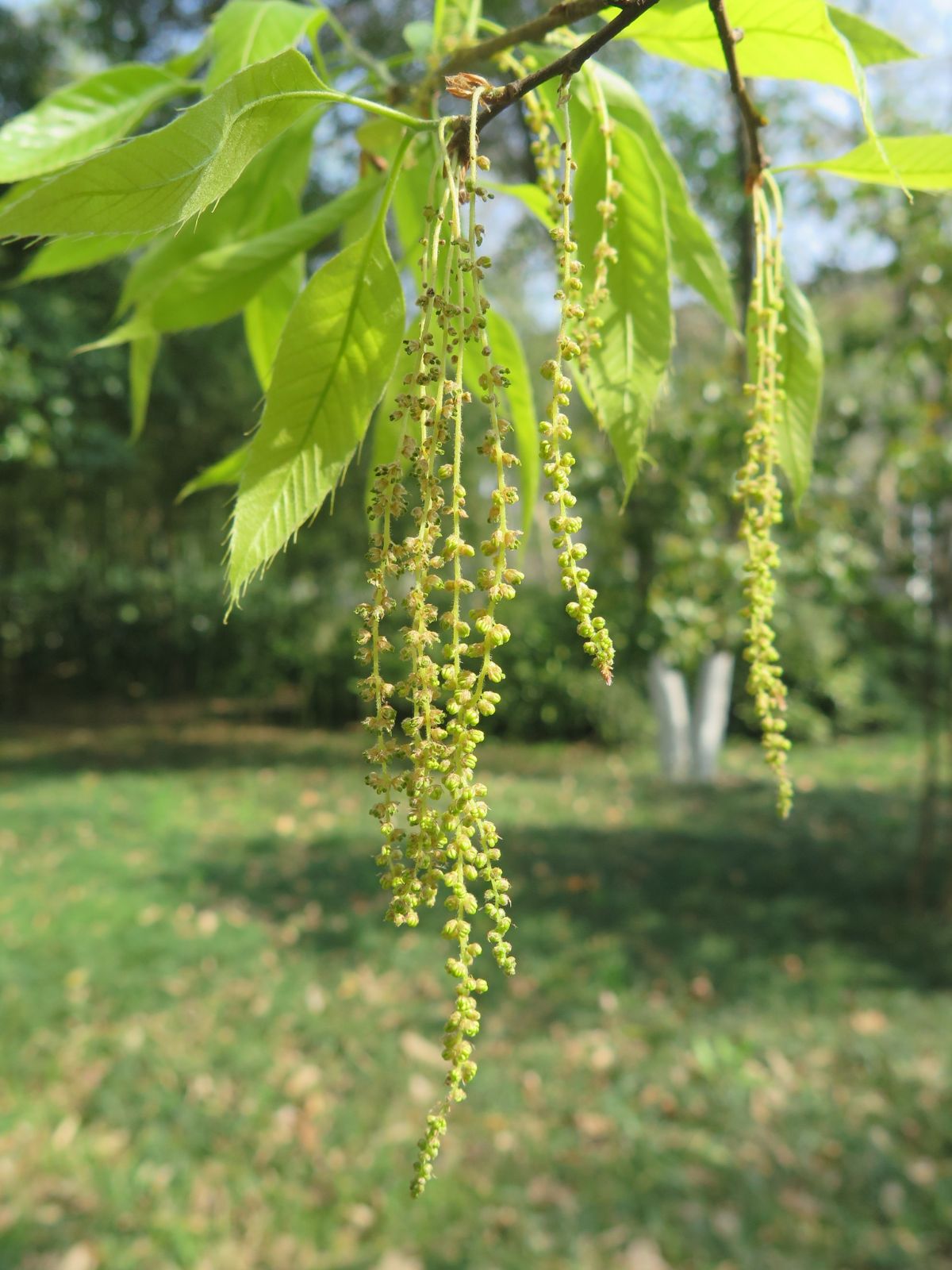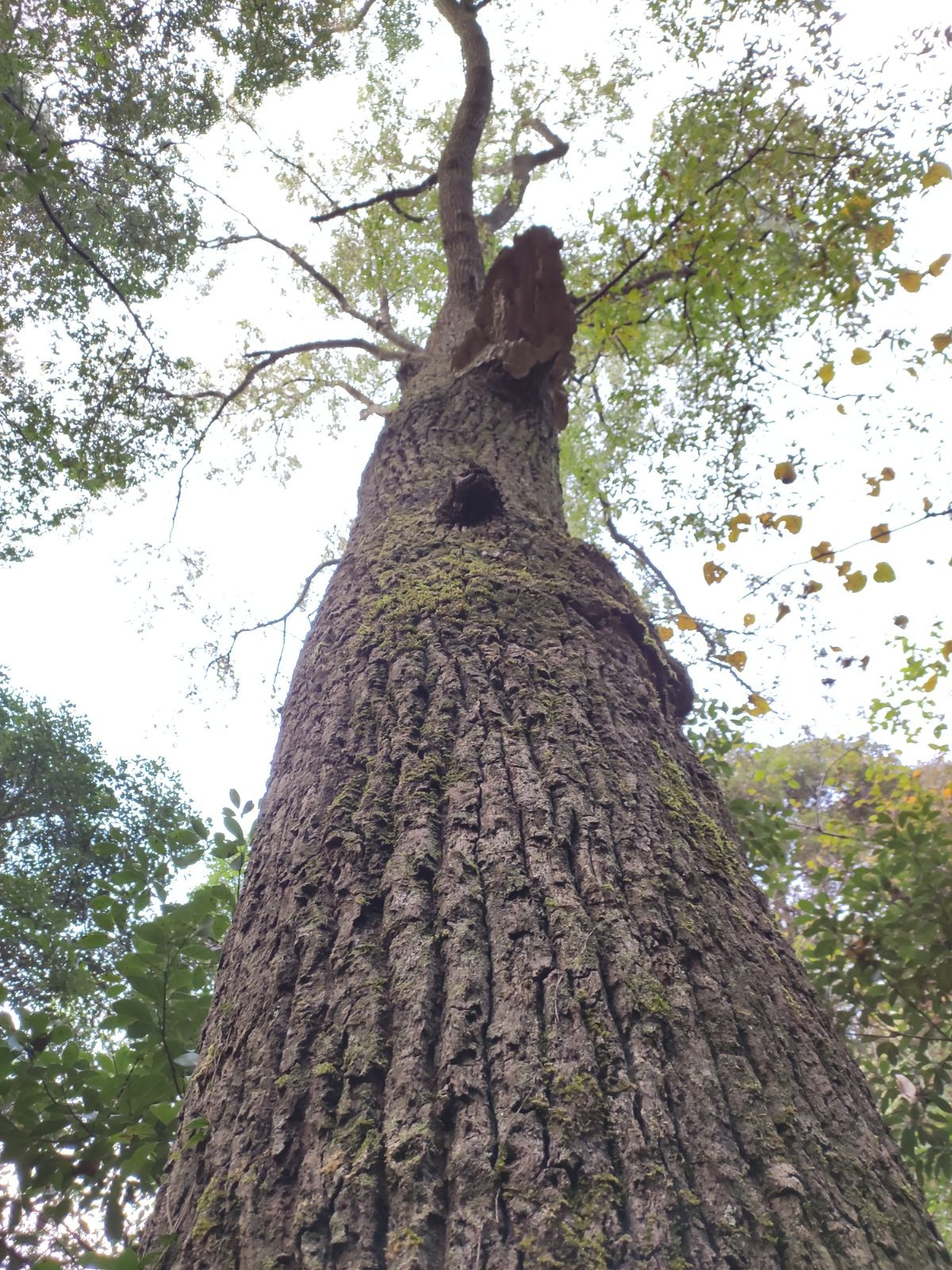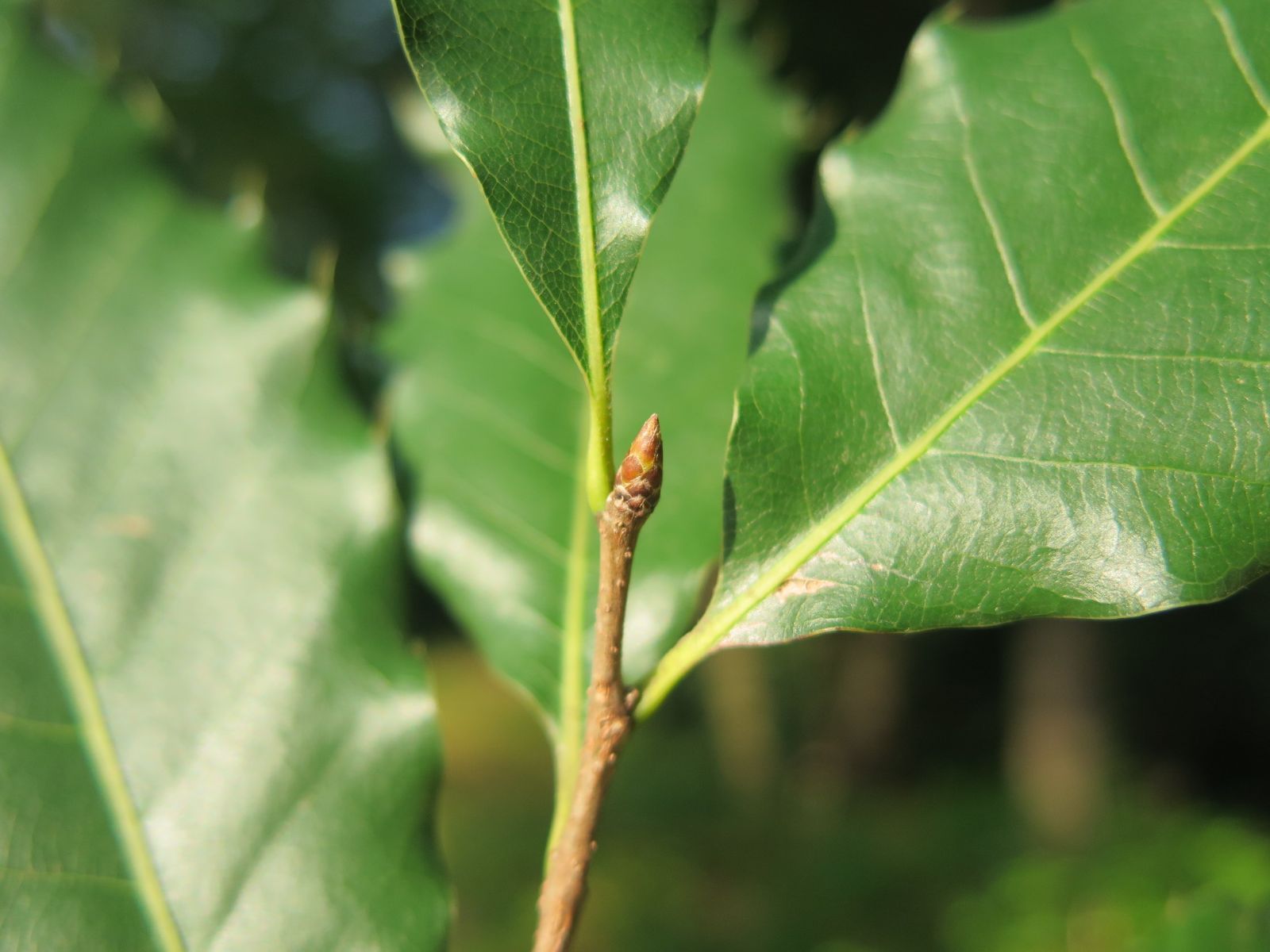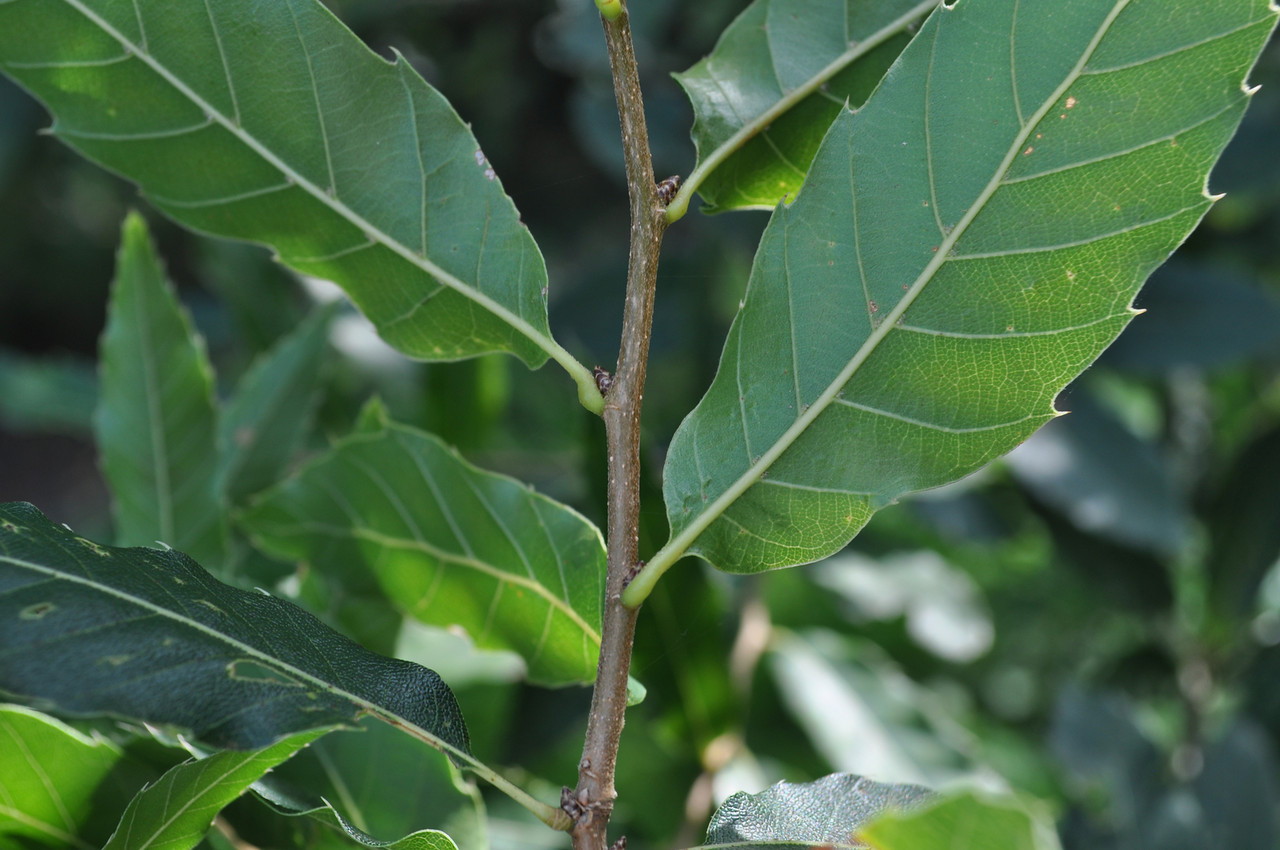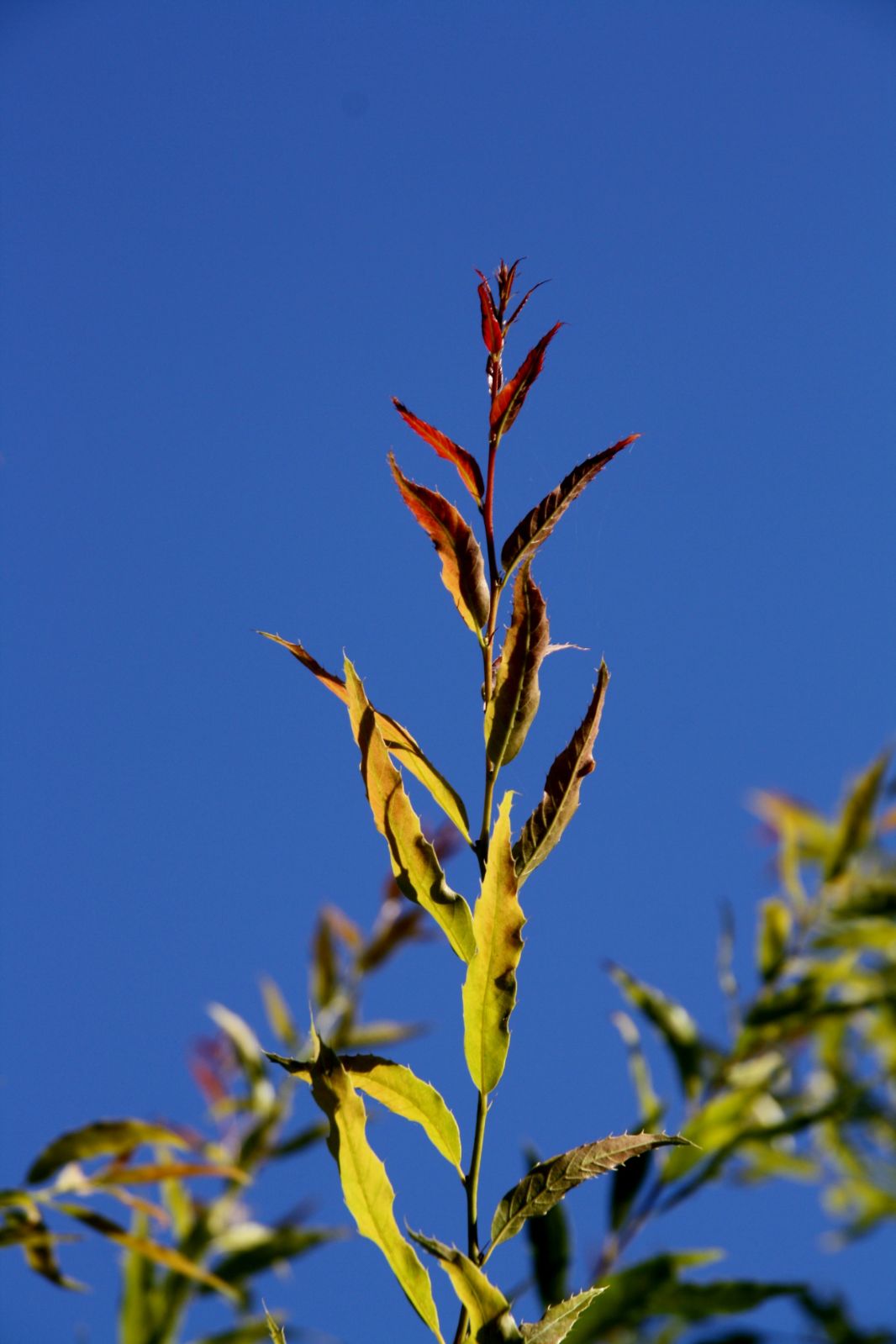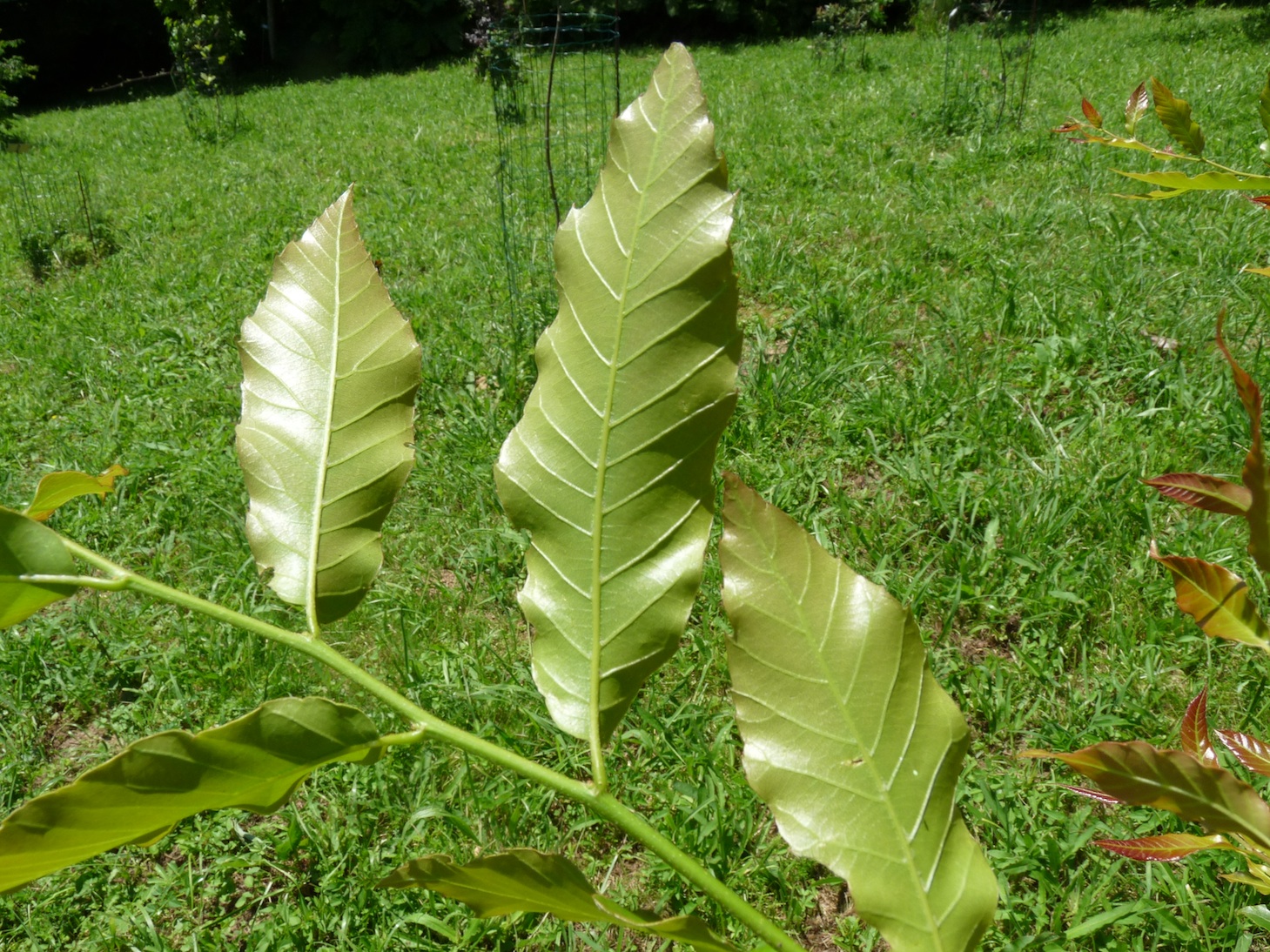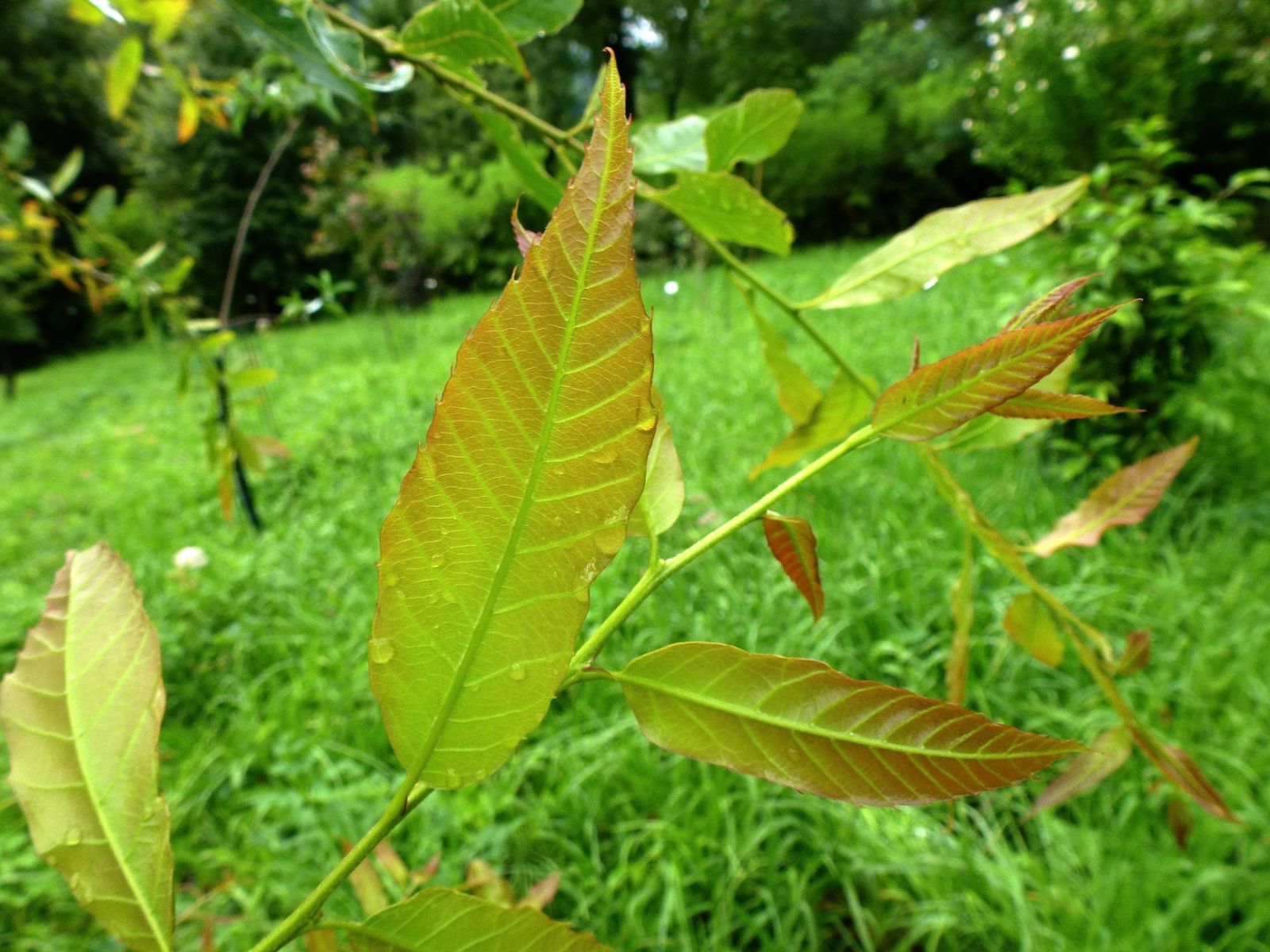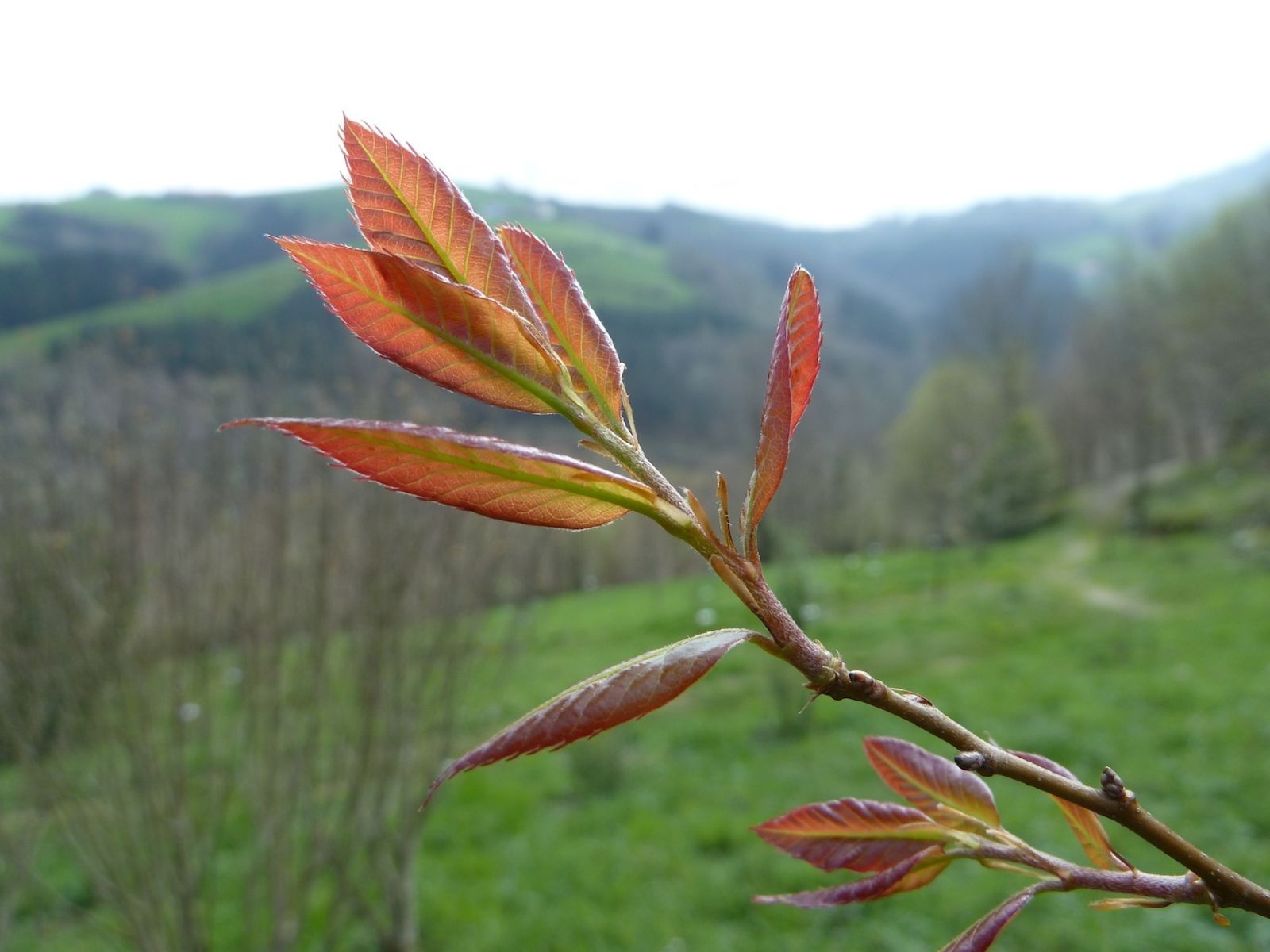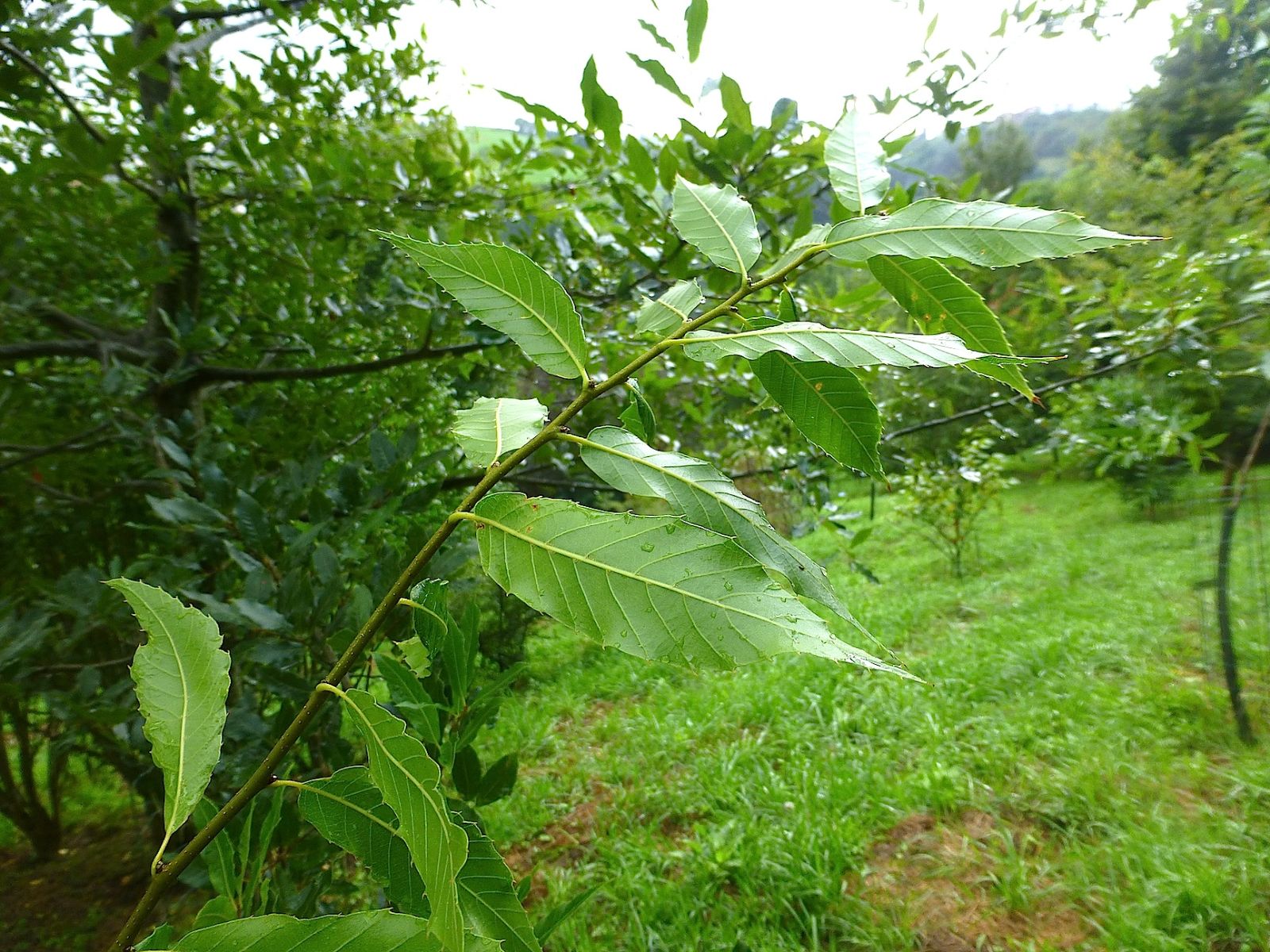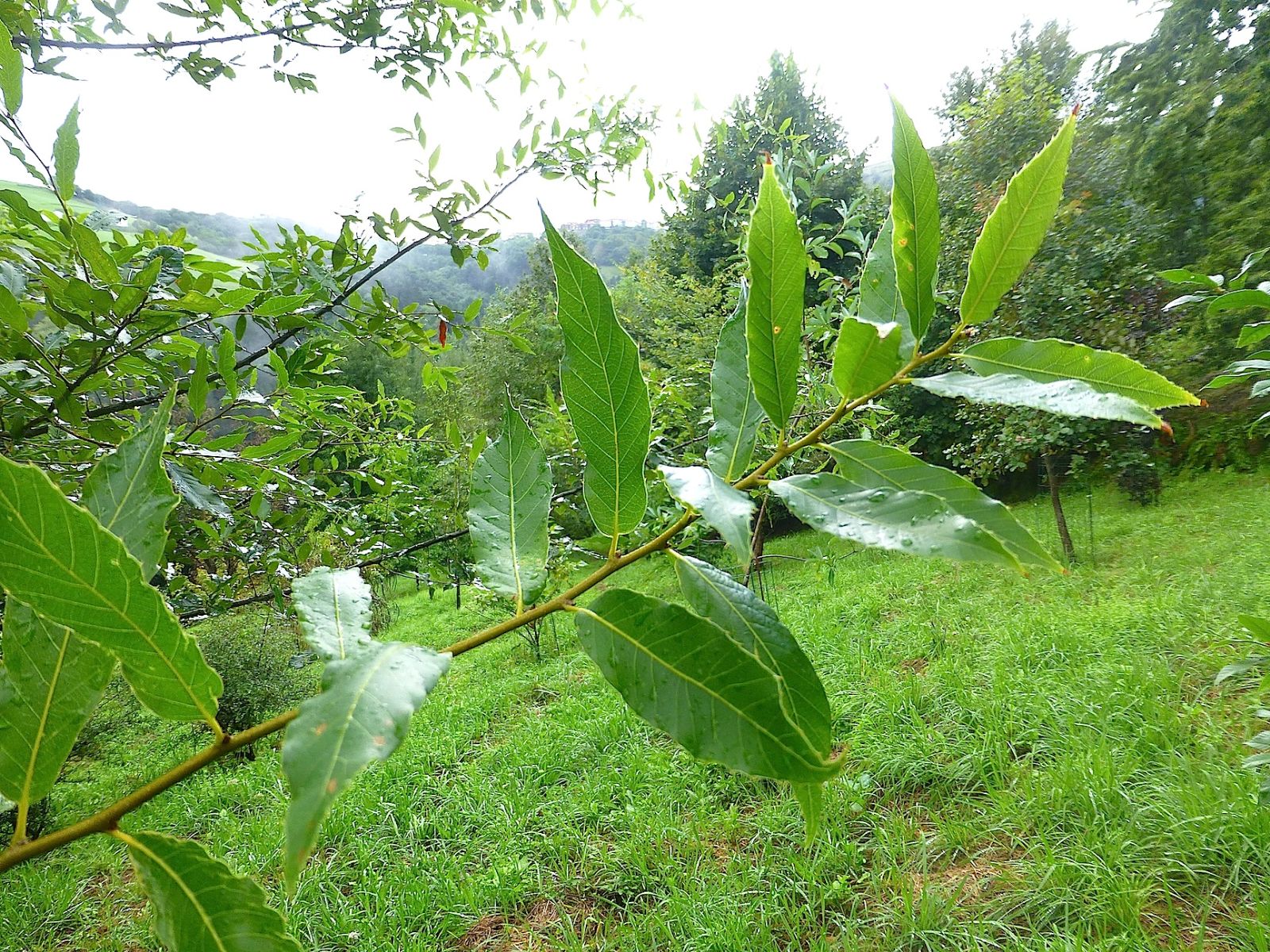Quercus chenii
Sponsor
Kindly sponsored by
The Trees and Shrubs Online Oak Consortium
Credits
Allen Coombes & Roderick Cameron (2021)
Recommended citation
Coombes, A. & Cameron, R. (2021), 'Quercus chenii' from the website Trees and Shrubs Online (treesandshrubsonline.
Genus
- Quercus
- Subgen. Cerris, Sect. Cerris
Common Names
- xiao ye li
Synonyms
- Quercus acutissima subsp. chenii (Nakai) Camus
- Quercus acutissima var. breviopetiolata C. Ho
- Quercus acutissima var. chenii (Nakai) Menitsky
Other taxa in genus
- Quercus acerifolia
- Quercus acherdophylla
- Quercus acrodonta
- Quercus acuta
- Quercus acutifolia
- Quercus acutissima
- Quercus afares
- Quercus affinis
- Quercus agrifolia
- Quercus alba
- Quercus aliena
- Quercus alnifolia
- Quercus aquifolioides
- Quercus arizonica
- Quercus arkansana
- Quercus aucheri
- Quercus augustini
- Quercus austrina
- Quercus × auzendei
- Quercus baloot
- Quercus bambusifolia
- Quercus baronii
- Quercus bicolor
- Quercus brantii
- Quercus buckleyi
- Quercus canariensis
- Quercus canbyi
- Quercus candicans
- Quercus castanea
- Quercus castaneifolia
- Quercus cerris
- Quercus chrysolepis
- Quercus coccifera
- Quercus cocciferoides
- Quercus coccinea
- Quercus conspersa
- Quercus crassifolia
- Quercus crassipes
- Quercus delavayi
- Quercus dentata
- Quercus deserticola
- Quercus dolicholepis
- Quercus douglasii
- Quercus dumosa
- Quercus durifolia
- Quercus eduardii
- Quercus ellipsoidalis
- Quercus emoryi
- Quercus engelmannii
- Quercus engleriana
- Quercus euboica
- Quercus eugeniifolia
- Quercus fabri
- Quercus faginea
- Quercus falcata
- Quercus floribunda
- Quercus frainetto
- Quercus franchetii
- Quercus fruticosa
- Quercus fusiformis
- Quercus gambelii
- Quercus garryana
- Quercus geminata
- Quercus georgiana
- Quercus germana
- Quercus gilliana
- Quercus gilva
- Quercus glabrescens
- Quercus glauca
- Quercus graciliformis
- Quercus gravesii
- Quercus griffithii
- Quercus grisea
- Quercus guyavifolia
- Quercus hartwissiana
- Quercus hemisphaerica
- Quercus × hispanica
- Quercus hondae
- Quercus hypargyrea
- Quercus hypoleucoides
- Quercus ilex
- Quercus ilicifolia
- Quercus imbricaria
- Quercus incana
- Quercus infectoria
- Quercus insignis
- Quercus ithaburensis
- Quercus kelloggii
- Quercus × kewensis
- Quercus kiukiangensis
- Quercus laceyi
- Quercus laevis
- Quercus lamellosa
- Quercus lanata
- Quercus lancifolia
- Quercus laurifolia
- Quercus laurina
- Quercus × leana
- Quercus leucotrichophora
- Quercus × libanerris
- Quercus libani
- Quercus lobata
- Quercus lobbii
- Quercus lodicosa
- Quercus longinux
- Quercus longispica
- Quercus look
- Quercus × ludoviciana
- Quercus macranthera
- Quercus macrocalyx
- Quercus macrocarpa
- Quercus macrolepis
- Quercus marilandica
- Quercus mexicana
- Quercus michauxii
- Quercus mongolica
- Quercus monimotricha
- Quercus montana
- Quercus morii
- Quercus muehlenbergii
- Quercus myrsinifolia
- Quercus myrtifolia
- Quercus nigra
- Quercus × numidica
- Quercus oblongifolia
- Quercus obtusata
- Quercus oglethorpensis
- Quercus oxyodon
- Quercus pagoda
- Quercus palmeri
- Quercus palustris
- Quercus pannosa
- Quercus parvula
- Quercus petraea
- Quercus phellos
- Quercus phillyreoides
- Quercus planipocula
- Quercus poilanei
- Quercus polymorpha
- Quercus pontica
- Quercus prinoides
- Quercus pubescens
- Quercus pyrenaica
- Quercus rehderiana
- Quercus reticulata
- Quercus robur
- Quercus rotundifolia
- Quercus rubra
- Quercus rugosa
- Quercus rysophylla
- Quercus sadleriana
- Quercus salicina
- Quercus sartorii
- Quercus × schneideri
- Quercus schottkyana
- Quercus semecarpifolia
- Quercus senescens
- Quercus serrata
- Quercus sessilifolia
- Quercus setulosa
- Quercus shumardii
- Quercus sinuata
- Quercus spinosa
- Quercus stellata
- Quercus stenophylloides
- Quercus suber
- Quercus subspathulata
- Quercus tarokoensis
- Quercus tatakaensis
- Quercus texana
- Quercus tomentella
- Quercus trojana
- Quercus tungmaiensis
- Quercus turbinella
- Quercus × turneri
- Quercus undulata
- Quercus utahensis
- Quercus utilis
- Quercus uxoris
- Quercus variabilis
- Quercus velutina
- Quercus virginiana
- Quercus vulcanica
- Quercus warburgii
- Quercus wislizenii
- Quercus xalapensis
Deciduous tree 20–30 m tall, trunk to 2.5 m dbh. Bark greyish brown to blackish, thick, irregularly and deeply fissured with age. Twigs tomentose at first, to 1.5 mm thick, later brown, glabrous, with conspicuous lenticels. Buds oblong with oval, light reddish brown scales. Leaf blade broadly lanceolate to ovate-lanceolate, 7–12 × 1–3.5 cm, upper surface glossy green, glabrous, lower surface covered in yellowish brown tomentum, glabrescent or persistent only on vein axils, base shortly attenuate to broadly cuneate and slightly oblique, margin with spiniform teeth, apex acuminate; 8–17 pairs of small, often inconspicuous, setaceous teeth, 0.3–0.4 cm long (shorter than in Q. acutissima), located on the upper third of the leaf at least, secondary veins 12–16 on each side of midvein, continuing to the teeth; tertiary veins abaxially inconspicuous. Petiole 0.5–1.5 cm, glabrous. Cupule cup-shaped, 0.8–1.5 cm × 1.3–1.7 cm, enclosing up to one third of nut; scales from base to middle triangular, adherent to cupule, tomentose, to 3 mm, apical scales linear, to 5 mm, straight or inflexed. Acorn subsessile, mostly in pairs, pale brown, ellipsoid, 1.2–2.5 × 1–1.5 cm, one third to half enclosed in the cupule, apex silky white, with an apical mucron about 0.2 cm wide, ripening in the second year. (le Hardÿ de Beaulieu & Lamant 2010; Huang et al. 1999)
Distribution China Anhui, Fujian, Henan, Hubei, Hunan, Jiangsu, Jiangxi, Shandong, Sichuan, Zhejiang
Habitat Mixed mesophytic forests; below 600 m.
USDA Hardiness Zone 6
RHS Hardiness Rating H7
Conservation status Near threatened (NT)
Taxonomic note Very closely related to and perhaps doubtfully distinct from Q. acutissima, of which for Camus it was a subspecies.
According to Aimée Camus, what she described as Q. acutissima subsp. chenii differs from typical Q. acutissima in its quite glabrous leaves, smaller fruits, and cups with shorter, more slender scales. Le Hardÿ de Beaulieu & Lamant (2010) indicate that it can be distinguished from Q. acutissima by the smaller leaves (7–12 × 1–3.5 cm versus 8–20 × 2–6 cm), shorter petioles (0.5–1.5 cm versus up to 5 cm), and the bark, which is not as deeply fissured. In his original description, Nakai (1924) states that Q. chenii’s leaves are glabrous from the beginning, the cupules and acorns are smaller, and the scales slenderer and shorter than in Q. acutissima. Features that are not often mentioned but are apparent on the type specimen are the long and slender taper-pointed tip to the leaf that is often distinctly falcate. This specimen also shows shorter and relatively broader leaves that seem to be without the long acuminate apex. Both leaf types can be seen on the tree at Sir Harold Hillier Gardens, the shorter leaves on the first growth flush while the longer and relatively narrower leaves with a long, tapered apex are on the second flush and up to 15 cm long. In this tree the leaves have yellowish hairs on the underside and while Nakai described the species as glabrous, the specimen was collected in October and may have lost the hairs by then. Q. acutissima can have leaves that are bluntly pointed or even rounded at the apex to taper-pointed and with a slightly falcate tip.
Plants grown as Q. chenii are widely cultivated and found in collections in Europe, North America, and New Zealand. However, some of these appear closer to Q. acutissima. The tallest specimen in the UK and Ireland, according to the Tree Register (2021), grows at Westonbirt Arboretum, England, measuring 18 m × 33 cm dbh in 2014, whilst a tree at Sir Harold Hillier Gardens, England is the champion for girth and in 2017 measured 13.6 m × 43 cm dbh (Royal Botanic Garden Edinburgh 2021). It is also recorded at Kunming Botanical Garden, China (S. Weibang pers. comm. 2021). Quercus chenii behaves very differently to Q. acutissima in cultivation and is perhaps better suited to areas with hot summers. It is slower growing, less likely to make a tree and the young foliage can be damaged by late spring frosts. While some trees have grown well, others struggle to attain tree size.
Quercus chenii was received by the U.S. National Arboretum as seed from Lushan Botanical Garden, Jiangxi, China, in 1937. A plant from this introduction was 15 m tall in 1963, while another reached 12 m × 50 cm dbh in 1974. Though the original plants have not survived beyond 2005, hundreds of open-pollinated seedlings from trees of this accession were distributed to other institutions in the U.S. in 1969 (S. Lura, pers. comm. 2021). Survivors are recorded at Washington Park Arboretum, (Washington) Morris Arboretum (Pennsylvania), the Holden Arboretum (Ohio) and Bartlett Tree Arboretum (North Carolina) (Quercus Multisite 2021). From the same source are 4 trees at the Hoyt Arboretum, Portland, Oregon accessioned in 1971 (M. NIcholson pers. comm. 2021).
What appears to be this species has been distributed as Castanopsis sclerophylla or C. chinensis and plants were recorded under these name at Caerhays Castle and Gardens, Wynkcoombe Arboretum, Kalmthout Arboretum and Arboretum Het Leen, Belgium (Jan De Langhe pers. com. 2021).
Described in 1924, it was named after Chinese botanist Yung Chen, who collected the type specimen in Zhejiang provice, China in 1920.

